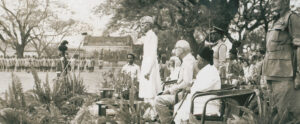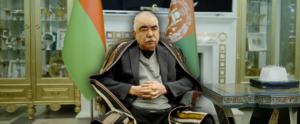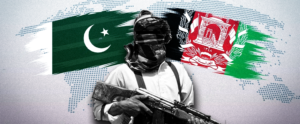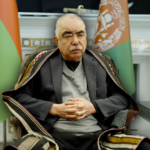I hail from Dardistan1, a region in northern Pakistan that forms part of the Hindu Kush-Karakoram area, known as the crossroads between South and Central Asia. The name Dardistan describes the area comprising the highest mountain ranges of Hindu Kush, Karakoram, western Himalaya and the Pamir mountains, and includes northern Pakistan, parts of Eastern Tibet in China, eastern Afghanistan and the Kashmir valley on both sides of the Pakistan-India border.
My work, as an ethnographer and linguist, is focused on north Pakistan. North Pakistan is a spectacular mountainous land of immense linguistic, ethnic and geographic diversity. It is undoubtedly one of the most multilingual places on the planet. Over centuries, the movement and contact of people at this crossroads of Central and South Asia have left a complex pattern of languages and dialects. By north Pakistan, I mean the region of Gilgit-Baltistan, the upper parts of Pakistan’s northwest province, Khyber Pakhtunkhwa, including the districts of Chitral, Dir, Swat, Buner, Shangla, the upper Hazara division, and the part of Kashmir Vale under Pakistan’s control. In terms of area and population, north Pakistan covers more land and has more people than Austria and Switzerland put together.
Traditionally, these communities lived in what the social anthropologist Fredrik Barth called “acephalous states”—societies without political leaders or hierarchies but with their own local, egalitarian system of governance. Notions of rights and responsibilities were deeply embedded in their pastoral cultures and worldviews. Before the expansion of the states into these areas, the people of Dardistan, including northern Pakistan, had their own traditional political organization. Villages and valleys were autonomous and political allegiance was mostly based on lineage and descent. In some communities, however, there existed political organizations based on villages and valleys. There is also evidence of the existence of centralized minor states in Gilgit and in Hunza since 700 CE.
In the wake of the “Great Game”—the struggle for control over Central Asia between Russia and Britain—the latter applied a policy of controlling the northern borderline states, in Gilgit and in Chitral. They consolidated their power through the local rulers in these areas. By 1889 the British formed the Gilgit Agency to control the region of Hindu Kush and Karakoram by establishing good relations with the local monarchs in Gilgit-Baltistan and Chitral areas; and thus established their ‘indirect rule’ there. Prior to their indirect rule there were smaller princely states in Gilgit, Hunza, Nagar, Yasin, Baltistan and Chitral that were responsible for maintaining the political order with the support of village and valley level local influentials. The British, however, did not apply this policy to areas further south of Dardistan—in Kohistan, Diamer, Swat and Dir. These regions mostly remained independent and uncontrolled until the end of British rule in the sub-continent. The local princely states established in Swat and Dir in the beginning of the twentieth century were indirectly controlled by the British Political Agent at the Malakand top. These states were allowed to expand their rule in areas where the Dardic people, such as the Torwalis, Gawris, Mayo and Shina, were living. The Swat state extended to the Torwal area in 1921-22, leaving the Kalam territory under the direct rule of the British Political Agent. The Panjkora valley in upper Dir came under the rule of the Nawab of Dir, while the western part of Indus Kohistan up to Kandhia was annexed to the Swat State by 1939.
Before the annexations these areas were mostly autonomous. The Shinkari and Indus Koshistani areas had independent political units called ‘segmentary republics’ by the German anthropologists, Karl Jettmar. On the right bank of the Indus River, according to the ethnographer Jurgen Wasim Frembegen, the main political units were Duber, Jijal, Patan, Seo and Kandhia; whereas on the left bank of the Indus River, in Shinkari Kohistan, these units were Basha, Harban, Shatial, Sazin, Sumer, Jalkot, Palas, Kolai and Batera. These are valleys in the Kohistan and each valley was a political unit. Each valley had a fortified village in which the houses had huge watch towers, known as Shikari, which were like forts for the purpose of defending their ‘republics’ against invasion by other such republics. The main conflicts were over grazing lands. There were constant armed conflicts between these village or valleybased republics; and for that reason, these areas were mostly known as Yaghistan, literally meaning ‘land of lawlessness’. Frembegen mentions in his 1999 paper, ‘Indus Kohistan: An Historical and Ethnographic Outline’, that the valleys of Tangir and Darel in the Diamer were different in as much as they seemed to be considered as a transitional zone between the northernmost centralized states of Gilgit and Yasin and the southern areas where the ‘segmentary republics’ existed.
Internal conflicts were common until the British took over the ‘valley republics’. The fortified villages were abandoned, and various clans were able to easily move out of these villages to settle elsewhere. According to Keiser, in his1991 book, ‘Friend by Day; Enemy by Night’, apart from the major conflicts on grazing lands, blood feuds were also common in these areas as well as in the areas of Panjkora, upper Dir. The main cause was family honour. Crimes such as rape or adultery were resolved by local people through their traditional social norms and dispute resolution mechanism.
There were male assemblies with different names in different areas. For instance, in Harban these were known as Sigas whereas in Torwal in Swat and Panjkora in Dir these were known as Yarak and Kher respectively. In former Kafiristan, now Nuristan, these were known as Ure. These terms have now been mostly replaced by the word Jirga. Its members used to be village influentials from the landholding class of the male population. These men are now mostly known as Maliks in Swat, Dir and Kohistan, while in Shinkari Kohistan, Gilgit and Chitral the men associated with Sigas and Mahraka were known as Jashtero (they were also known as Dharmus in Chitral). The term Jast, meaning elder man, was also common among the Kati and Prasun people of Nuristan. Like Jashtero, Dharmus or Malik a Jast could be the member of the Ure (jirga) there. Mir was simply an elevated position of Jast.
Among the Torwalis, Gawris and Mayo (Kohistani) people of Swat and Kohistan, as anthropologist Fredrik Barth, educates us in his book, ‘An Ethnographic Survey of Indus and Swat Kohistan’, the political organizations were based on descent, common ownership of a territory (village or valley) and a working political alliance. This alliance was usually referred to as ‘Lat’ in Torwali and is substituted with the Pashto word ‘dala’ which literally means an alliance or faction. The Yarak (council) among the Torwalis, like other Dardic communities, was the main body of men deciding conflicts and disputes among families and tribes. In Torwal each village had its own council, but a central Yarak was also convened in times of problems pertaining to the entire country of Torwali; this, according to the Barth, was convened in Old Branial (now Puran Gam).
The responsibility of these councils (yarak, mahraka, siga or jirga) was to settle disputes. They were composed of men from the village or the entire valley. The size and composition of these councils depended on the size, nature and intensity of the disputes. Usually, the disputants were not included in these councils, they would, however, be allowed to speak for themselves if needed, and were represented by men from their own kinship. On a smaller scale, internal councils within the same lineage were called to settle disputes; the mediators were chosen based on their relationship to the disputants. Councils were also convened to punish those whose acts were regarded against the community and its norms.
Over time, however, Dardistan’s indigenous communities went through multiple phases of colonization and assimilation: from Alexander the Great in the fourth century BC to the Pushtun and Central Asian invasions in the eleventh and sixteenth centuries to the consolidation of British colonialism in the area in the nineteenth century. As a result, they faced tremendous changes in their civic imagination—changes that heavily impacted the traditional ways of the indigenous governance systems. In particular, this involved the adoption of the concept, structure, and name of the Pushtun governance system, known in Pashto (the language of the Pushtun) as Jirga or Jargah.
The word jirga, derived from the Mongolian tsarak, refers to a large circle of men gathered in an assembly. It is now generally attributed to the Pashto language. Other languages in Pakistan call this traditional council by different names. In our Dardic languages, such as Torwali, Shina, Khowar, and others, Yarak, Biyak, and Mahraka are alternatives. Whatever the name, such a tradition has existed in every society within Pakistan since ancient times; although originally a Jirga used to be a special event, called only during times of war between tribes and nations and to resolve disputes between tribes and clans. Over time, Pushtun communities in Yaghistan began to extend the function of the Jirga to administration, law and order, and justice. The taking over of major parts of Dardistan by the Pushtun in the sixteenth century led to the spread of the Pushtun version of the Jirga to communities in the region, replacing their traditional governance system. Finally, in the early 1900s the British colonial government introduced the Jirga and related laws to areas where people seemed unwilling to give up their ancient traditions. It was legalized in erstwhile FATA, and in Gilgit Baltistan through the Frontier Crimes Regulations. Today, the Jirga has only one main function: reconciliation and arbitration in case of conflicts between families, clans, tribes and villages. Traditionally the Jirga system has also played the role of courts, police and of pronouncing punishment. In a modern state the Jirga is considered as mostly against the law of the land; and it has, in many cases, also violated human rights.
The 2017 report, “Women, Violence and Jirgas: Consensus in Impunity in Pakistan,” published by the National Commission on the Status of Women (NCSW), describes the Jirga as: “tribal councils, local institutions of conflict settlement that incorporate prevalent local customary law and rituals. The jirga is an all-male institution where designated ‘honorable men’ – mostly family headmen, village elders, tribal chieftains and landholders – arbitrate conflicts and give solutions that focus on restoring societal equilibrium rather than justice and human rights of individuals. The collective decision is socially binding on the parties involved.” The report further elaborates: “Jirgas are instituted and led by men who are the dominant local elite and who participate as either a hereditary privilege or are nominated because of their social or economic status. As the apex body on conflict mediation at the community level, the Jirga is composed of tribal or clan chiefs as well as elite men of the community who are deputed as judges; the elders are not elected, nor do they have any legal or adjudicatory training, but consist of landholding members of the tribe who exercise considerable political power.”
The Jirga system still holds ground in most of the Pushtun society and the perception of the people pertaining to its role and function varies. A report, ‘Role of Jirga in Dispute Resolution in District Mardan, Khyber Pakhtunkhwa’, published in 2021 brought forward the perception and confusion around the role of a Jirga. A majority of the respondents regarded Jirga as a faster and more economical means of dispute resolution than the formal courts, however, at the same time, a majority also regard Jirgas as more corrupt than the courts. Furthermore, the report calculates that a majority of the respondents did not agree to the notion that the decisions by Jirgas were as per the Sharia, Islamic law; but, at the same time, a majority held that the decisions made by the Jirgas were ‘fairer than the ones made by the courts’. The report, in its next section, stated that a majority of the people regarded the Jirga as democratic, yet, within the same table, over 82 percent said that the Jirga had failed to protect the poor and week segments of society.
The Jirga institution was very active and had legal protection in the erstwhile FATA i.e. Federally Administered Tribal Areas, the borderline areas along the Pak-Afghan border known as Durand Line where the British colonial power had given some legal and administrative power to the Jirga through a law known as the Frontier Crimes Regulation. The local chiefs known as Maliks were appointed as Jirga members and given the task to work as a ‘bridge between the government and the local Pushtun society’2. Another report, ‘Jirga System and Its Role in Peacebuilding and Development in Pakistan’s Terrorism-Affected Pashtun “Tribal” Districts3’, found that the dispute resolution role of the Jirga system is questioned and rejected because of the violation of human rights. The tradition Sawara is a case in point whereby a girl is offered to the aggrieved party in a dispute.
Due to corruption, mismanagement, and a certain cultural romanticism, the people in power in Khyber Pakhtunkhwa have also been in favor of Jirgas and the former government gave them a role by naming them District Redressal Committees, with influential men, including religious leaders, in them.
But, with its focus on retaining societal equilibrium rather than providing justice and human rights to individuals, how has the Jirga performed? To answer this question, we can look at the controversial case of a dispute between two villages in the Swat District of northern Pakistan, as well as at many cases of human rights violations in various parts of Pakistan, including Dardistan.
In July 2021, a bloody clash over the use of a pasture broke out between villagers of the Kalam and Utror valleys in the Swat District. Kalam and Utror are two scenic valleys in the upper Swat valley inhabited by Dardic people who speak the Gawri language. The two main villages have been in conflict over land and forest allocation in the area for more than five decades and occasionally these conflicts escalate into bloody feuds. On this particular occasion, villagers opened fire on one another, killing five people and injuring over a dozen others.
Despite fierce fighting, the state’s law and justice machinery was put on hold. Instead of acting against those who opened fire and killed people, the commissioner of Malakand (an administrative division that includes Swat) invited the parties to his office. The law enforcement agencies summoned the local political leaders and asked them to find a way out. There is no indication that any of these leaders conveyed to the provincial or regional heads of these institutions that it was their responsibility to maintain peace and order. Upon asking why the provincial government was hesitant to act, I was told by the officials that the chief minister at that time had given them clear directions to avoid action and try to settle the issue by means of Jirgas.
At the behest of the district and divisional administration, many political leaders and elders from different parts of Swat went to Utror and Kalam multiple times and held scores of Jirgas. In this instance, despite the cessation of armed conflict, the Jirgas were unable to resolve the core issue. In some cases, such as when, in August 2021, the people of Kalam stopped trucks of food supplies that were being transported to Utror and people from both sides took the law in their hands, the Jirgas failed to control the situation. Due to the failure of the Jirgas, the police had to eventually step in for the trucks to reach Utror.
The Jirga tradition has become partisan, and usually the parties involved try to woo or bribe the mediators. None of the mediators can be truly honest for fear of being branded as an ally of the opposite party. Political hopefuls frequently also exploit such situations to gain votes, while at the same time they cannot do justice to the cases at hand because their political affiliations make them appear biased.
During the Kalam-Utror conflict and the arbitration by the Jirga, it was apparent that the majority of the youth no longer wanted to have this archaic justice system, whereas the elderly men were in favor of it, since these councils are solely composed of the latter who have the only say in all matters within this system. People in the old tradition of such councils were far more honest and not influenced by any perks, in the form of bribes or votes. Currently, the Jirgas seem to be no more than an opportunity for political point scoring.
And then there is the issue of treatment of women within this system. Women are always excluded from Jirgas, and in many cases they are the victims of this system’s reconciliation efforts. The 2017 NCSW report narrates scores of stories where Jirgas or their variants have victimized women. For instance, the report states:
“In June 2011, where on jirga orders, a middle-aged woman, Shehnaz Bibi, was dragged out of her home and forced to parade naked on the street as punishment for an alleged crime of her son.”
“In 2015, a jirga in Darel Valley of Diamir district decreed that women would not be allowed to vote in elections, disenfranchising over twelve thousand women voters in the constituency. The jirga included religious leaders and candidates of political parties from the area.”
“In 2014, eleven-year-old Amna was married to a man three times her age as compensation for her uncle having raped a girl in Grilagan, [Bahrain Swat] in northwest Pakistan. Amna was married off to the brother of the girl who had been raped. She was one of the two girls from the rapist’s family given to the aggrieved family through a jirga decision. The other girl, Zulhaj, spoke to the media saying she had accepted her fate”.
Given these examples and the case of the Utror-Kalam conflict it can be concluded that the contemporary Jirga system has not only failed in its reconciliation efforts but has also significantly violated human rights.
Available information tells us that the local pre-jirga institutions were more effective than the ones introduced after the cultural and colonial intrusion among the Dardic communities of northern Pakistan. These communities have, by now, lost their indigenous traditions of the distribution of roles and responsibilities as they have fallen victim to a social order that is misogynist and a mix of religious extremism and cultural retrogression.
Today, most of the conflicts settled by the Jirga are related to the Pushtun values of ghairat/izzat (honour) and badal (revenge). Ghairat is mostly related to women’s purity and if it is violated badal is the only way out.
Anthropologist Lincoln Keiser who conducted his field work in the region of Panjkora/Dir Kohistan in the 1980s and published his work in a book, ‘Friend by Day; Enemy by Night,’ said that the limited information available on the pre-Islamic communities of Dardistan suggest that “women did not seclude themselves; relationship between men and women were relatively free and open; and the sexual purity of women did not predicate notions of honor”.4 This, however, does not mean that there were no disputes over women. According to Keiser there were no murders in disputes over women, and men would settle such disputes by other means.
“Village peace” was a respected value then and the ones who harmed this peace were expelled from the village. George Scott Robertson also narrated a similar value in his 1989 book, ‘Kafirs of Hindu Kush’, on the Kom tribe in today’s Nuristan in Afghanistan where the violators of village peace were expelled by the elders and their property confiscated. Fredrik Barth also tells similar stories about the Torwalis of Swat where murder and vengeance were treated in a similar manner, by fining and expelling the culprit. It is evident among the Torwalis even today that they rarely resort to murder on the basis of honour; and do not commit what is called ‘honour killing’.
Like the institution of Jirga, many modern values pertaining to honour and organized vengeance in Dardistan seem to have come with the dominant culture. In the last 50 years or so, the notion of ghairat on sexual purity of women has intensified with growing extremism and indoctrination of society where men migrating to the cities have learned a puritanic extreme version of religion which has been fused with the local culture and consequently given rise to murder and killing based on the values of ghairat and badal.
In pre-Islamic Dardic communities there were cases of organized vengeance but they were mostly to maintain ‘village peace’. Lincoln Keiser says, “In all probability, then, organized vengeance did form a part of the social order in pre-Islamic Kohistan—though not related to honor based on sexual purity of women and limited to intercommunity relations. Intracommunity peace was critical for survival in an environment where force often decided political differences between settlements. Networks of alliance and hostility among communities cast in terms of organized vengeance provided a degree of order in an otherwise anarchical situation”5.
References
- The name, Dardistan, to this geo-cultural territory was first applied by the wellknown orientalist and the then principal of the Government College in Lahore, Dr Gottlieb Wilhelm Leitner in his book ‘Languages and Races of Dardistan’ written in 1866. Leitner wrote on page 8, “Thirdly, by adoption of my term ‘Dardistan’, for the countries between Kabul, Kashmir, and Badakhshan, we were led to compare a number of races, which offer certain analogies, and which may have had a certain history in common since the time of the Alexander the Great’s invasion of India”. Probably Leitner borrowed the term Dardistan from ancient writers who wrote in Persian. For example the one such historian, Mirza Sang Muhammad Badakhshi used it in his Persian book “Tarikh-i- Badakhshan written in the 9th
- https://journals.sagepub.com/doi/full/10.1177/1542316620986138#bi br15-1542316620986138
- https://journals.sagepub.com/doi/full/10.1177/1542316620986138#bi br23-1542316620986138
- Keiser, Lincoln, ‘Friend by Day; Enemy by Night’ 1991 by Holt, Rinehart and Winston, Inc
- Ibid









